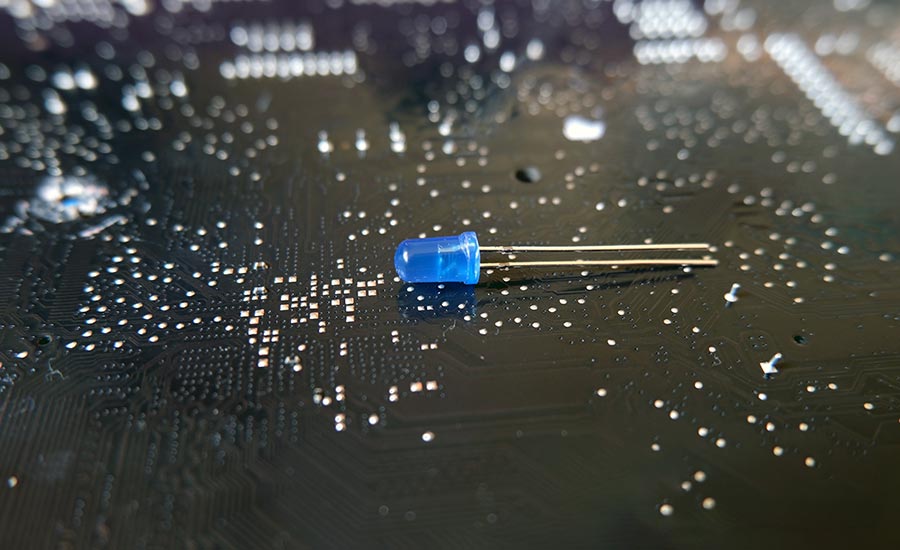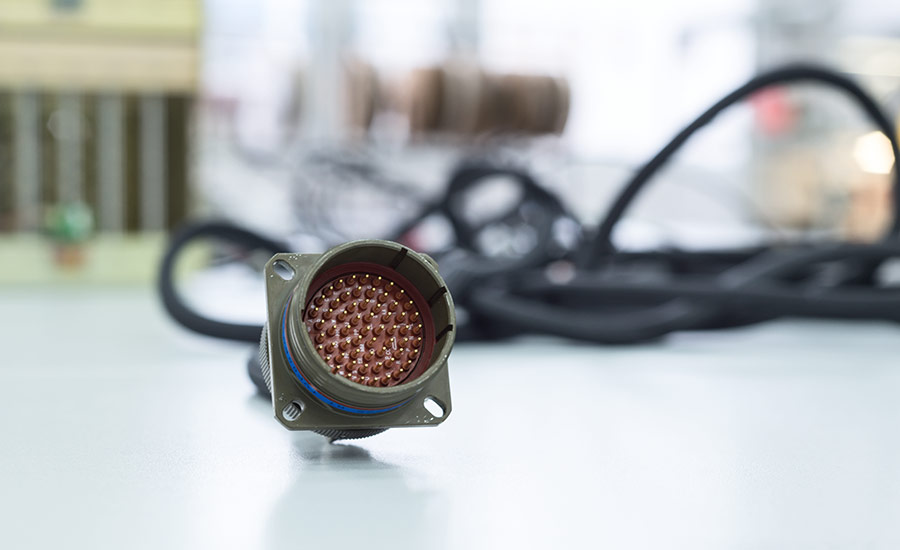
The global optoelectronics market is experiencing growth, with projections indicating a rise from USD 46.88 billion in 2023 to USD 73.83 billion by 2030, reflecting a compound annual growth rate (CAGR) of 6.7%.
This demand is guided by the growing need for energy-efficient solutions and the rapid adoption of optoelectronic devices in applications ranging from high-speed data transmission to advanced medical imaging.
Today, we’ll explore what optoelectronics are, what types of optoelectronic devices you might encounter and their various applications across many industries.
What Is Optoelectronics?
Optoelectronics is a specialized branch of electronics that focuses on the interaction between light and electrical systems.
Did you know that every time you snap a selfie, it’s an optoelectronic sensor in your phone’s camera that captures the light and turns it into a digital image?
Or, when you stream your favorite show, lasers and fiber optics in telecommunications systems are working tirelessly to deliver data at the speed of light.
At its core, optoelectronics drives innovation by combining the speed and efficiency of light with the versatility of electronics. The result? A wide range of devices that are faster, more efficient, and more reliable than traditional electronic counterparts.
What Are Optoelectronic Devices?
Optoelectronic devices are components or systems that utilize the unique properties of light to perform specific functions.
Some of the most common optoelectronic devices include:
- Light-Emitting Devices: LEDs (Light Emitting Diodes) and lasers that generate light for displays, communication, and medical equipment.
- Light-sensitive devices: Photodiodes and phototransistors that detect light and convert it into electrical signals for cameras, solar cells, and sensors.
- Optical components: Fiber optics and optocouplers that enable high-speed data transmission and electrical isolation.
Fun fact: Did you know that your kitchen lights could double as Wi-Fi routers, using LEDs to transmit data while still lighting up your home? This isn’t science fiction — it’s called Li-Fi, a real optoelectronic technology being explored for ultra-fast, secure internet.

Types of Optoelectronic Devices and Their Functions
Optoelectronic devices are categorized based on their primary functions: emitting light, detecting light or facilitating other optical processes.
The most common types of optoelectronic devices are:
1. Light-Emitting Devices
Ever scanned a barcode at the grocery store self-checkout? That’s a laser diode in action! It emits a narrow beam of light to read barcodes quickly and accurately.
Light-emitting devices generally include:
- LEDs: Widely used in consumer electronics for displays, indicators, and lighting systems. For example, LEDs power smartphone screens, energy-efficient light bulbs, and automotive lighting.
- Lasers: Found in telecommunications for high-speed data transfer via fiber optics, medical equipment like laser surgery tools, and industrial applications such as material cutting and 3D printing.
2. Light-Detecting Devices
Ever use a TV remote? Each time you change the channel, a phototransistor in the TV receives the infrared signal sent by your remote.
Light-detecting devices generally include:
- Photodiodes: Used in solar cells to convert sunlight into electricity and in sensors for devices like smoke detectors and cameras.
- Phototransistors: Applied in optical switches and remote-control receivers.
- Image sensors (e.g., CMOS and CCD sensors): Found in digital cameras, medical imaging devices, and surveillance systems.
3. Other Optoelectronic Components
Have you ever wondered how a video call with someone across the globe feels almost instant? Optical fibers carry light signals at astonishing speeds, making high-speed internet and 4K video streaming possible.
Other optoelectronic components include:
- Optical fibers: Essential for high-speed internet and telecommunications, enabling long-distance, interference-free data transmission.
- Optocouplers: Used to electrically isolate circuits while transmitting signals, critical in power supply systems and industrial automation.
- OLEDs (Organic LEDs): Found in premium display technologies for TVs and wearable devices.
Applications of Optoelectronics in Various Industries
Optoelectronics has transformed numerous industries by enabling faster, more efficient, and innovative solutions.
Key industries where optoelectronic devices have made a big impact include:
1. Telecommunications and Networking
Optoelectronics is the backbone of modern telecommunications and networking systems.
Components like lasers, photodetectors, and optical fibers enable high-speed data transmission over long distances.
Fiber optic cables, for example, are used to provide ultra-fast internet connections, providing minimal signal loss and interference.
Lasers are integral in signal modulation for optical communications, while photodetectors convert optical signals back into electrical ones at the receiving end. These technologies power everything from global internet networks to data centers.
2. Consumer Electronics
In consumer electronics, optoelectronics plays a central role in enhancing device functionality and user experience. LEDs are commonly used in displays, smartphone screens, and energy-efficient lighting solutions.
Image sensors like CMOS and CCD are the core of digital cameras and webcams, enabling high-quality video and photography.
Optoelectronic components also enhance smart home devices, including motion sensors for automated lighting and remote controls. This integration of light-based technology continues to drive innovation in everyday electronics.
3. Automotive and Aerospace
Optoelectronic devices are crucial in automotive and aerospace industries for safety, navigation, and efficiency.
Have you ever wondered how self-driving cars “see” the road? That’s optoelectronics in action. LiDAR (Light Detection and Ranging) systems, which use lasers to map surroundings in real-time, act as the eyes of autonomous vehicles. They can detect objects, measure distances, and even differentiate between a cyclist and a pedestrian — all in a fraction of a second.
Aerospace applications include advanced navigation systems, where lasers and photodetectors provide precision, and optocouplers enhance the reliability of electrical systems in extreme environments. These components also support communication systems used in satellites and aircraft.
4. Healthcare and Medical Devices
Optoelectronics revolutionizes healthcare by enabling precise and non-invasive diagnostic and therapeutic solutions.
Lasers are widely used in surgical procedures, such as vision correction and tissue removal, offering high precision and minimal recovery time.
Photodetectors are integrated into medical imaging devices like X-ray and MRI machines, while optoelectronic sensors in wearable devices monitor vital signs such as heart rate and oxygen levels. This technology supports breakthroughs in personalized medicine and patient monitoring systems.
Why Quality Optoelectronic Components Matter
Having high-quality components is not just about meeting industry standards — it’s about preventing costly failures, maintaining system integrity, and enabling innovation.
Challenges With Low-Quality or Counterfeit Components
Low-quality or counterfeit optoelectronic components pose significant risks to industries relying on their precision and reliability.
Key challenges associated with low quality components are:
- Performance failures: Inferior components can cause inconsistent or degraded performance, resulting in reduced efficiency and reliability. For instance, a counterfeit LED may exhibit poor brightness or fail prematurely, impacting applications such as displays or lighting systems.
- System failures: Counterfeit components often lack the necessary quality control measures, making them prone to failure under stress. In critical systems like automotive LiDAR or healthcare devices, a single component failure can have catastrophic consequences.
- Compliance and safety risks: Substandard components may not meet regulatory requirements, potentially leading to safety hazards. For example, optoelectronic sensors used in medical devices must follow strict standards to provide safety for patients.
- Economic impact: Using low-quality or counterfeit components can lead to costly rework, warranty claims, or even brand reputation damage. In industries like telecommunications, where uptime is crucial, these risks can translate into significant financial losses.

Why AGS Devices Is Your Trusted Partner for Optoelectronic Components
AGS Devices specializes in distributing high-quality optoelectronic components, ensuring every product meets strict industry standards for reliability and performance.
Our rigorous quality control processes guarantee the authenticity and functionality of each component, supporting the diverse demands of applications ranging from telecommunications and healthcare to automotive and aerospace.
We also distribute electronic components such as:
- Power Supply Distributors
- Semiconductors for Sale
- Circuit Protection
- Interconnects
- Passive Components Electronics
- Electronic Testing Equipment
- Electromechanical Devices
At AGS Devices, we understand the critical role optoelectronic components play in modern technology. Whether it’s LEDs for cutting-edge displays, photodetectors for high-speed data transmission, or optical fibers for reliable networking, our team makes sure every component contributes to the optimal functioning of your projects.
